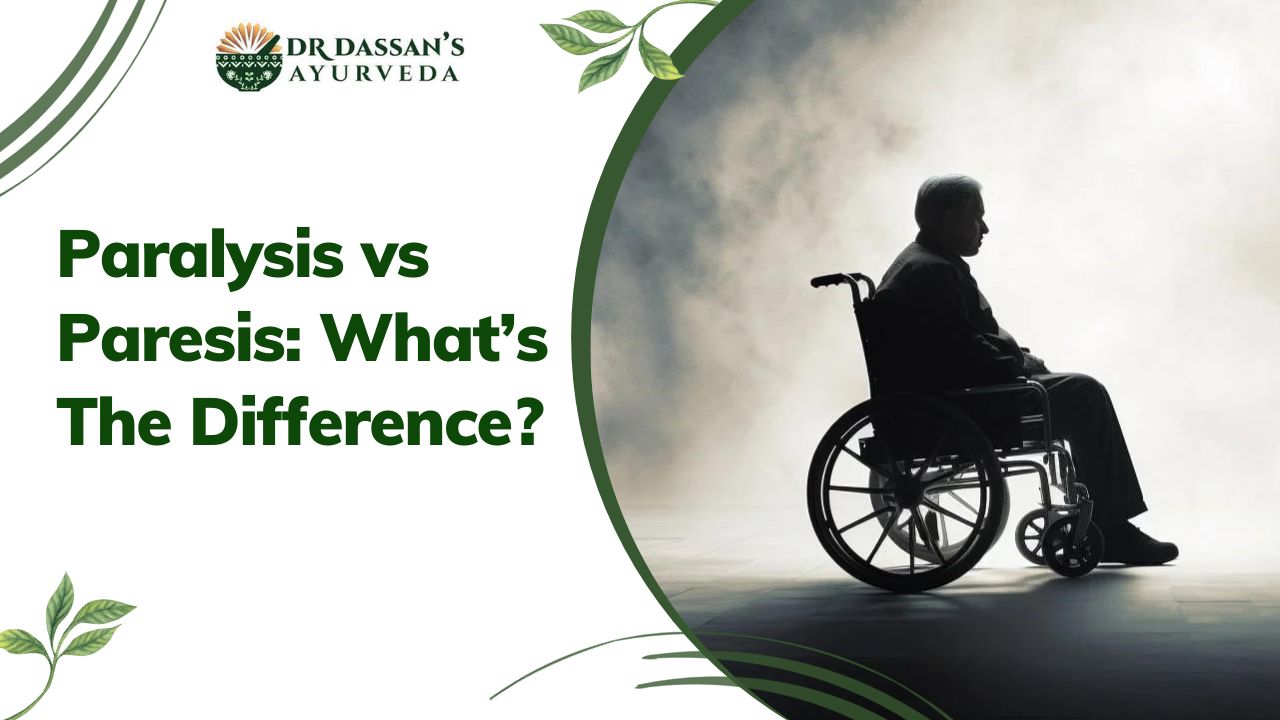Paralysis vs Paresis : Paralysis and paresis are two terms that are often used interchangeably. Both refer to conditions that affect muscle movement and control.
However, there are some key differences between the two that are important to understand. In this article, we’ll explore the differences between paralysis and paresis in detail.
What is Paralysis?
Paralysis refers to a loss of movement in one or more muscles of the body due to damage to the central nervous system. This damage can be caused by a variety of factors, including stroke, trauma, infection, or degenerative diseases.
Paralysis can be classified into different types based on the extent and location of the damage. The most common types of paralysis include:
- Monoplegia – Affects only one limb, such as an arm or a leg.
- Hemiplegia – Affects one side of the body, including the arm, leg, and face.
- Paraplegia – Affects the legs and lower trunk.
- Quadriplegia – Affects both arms and both legs, as well as the torso.
Symptoms of paralysis vary depending on the type and severity of the condition. Common symptoms include a loss of muscle strength or tone, difficulty moving, and a loss of sensation or feeling in the affected area.
Ayurvedic treatment of paralysis in India typically involves herbal supplements, which can help improve muscle strength and functioning.
These herbal supplements are formulated by Dr. Dassan’s Ayurveda with pure quality herbs that are natural and are free from side effects. These herbal supplements will work on the root cause of disease and will reduce the symptoms naturally.
What is Paresis?
Paresis is a condition that involves a partial loss of muscle strength or control. Unlike paralysis, paresis does not involve a complete loss of movement in the affected muscles. Paresis is often caused by damage to the motor cortex of the brain or the nerves that control muscle movement.
Paresis can be classified into different types based on the location and severity of the muscle weakness. The most common types of paresis include:
- Hemiparesis – Weakness or loss of movement on one side of the body.
- Paraparesis – Weakness or loss of movement in the legs.
- Quadriparesis – Weakness or loss of movement in all four limbs.
Symptoms of paresis may include weakness, difficulty moving, muscle stiffness, and muscle spasms. Individuals with paresis may also have difficulty performing everyday activities, such as walking or grasping objects.
Treatment for paresis typically involves physical therapy to help improve muscle strength and control. Herbal supplements are also used to help reduce muscle stiffness and spasms.
Dr Dassan’s Ayurveda offers you the best and effective Ayurvedic treatment for Paresis also. By following the diet and changing your lifestyle as advised will maintain the strengthening of muscles.
Difference Between Paralysis and Paresis
The main difference between paralysis and paresis is the extent and severity of muscle weakness. Paralysis involves a complete loss of movement in the affected muscles, whereas paresis involves a partial loss of muscle strength or control.
Another difference between the two conditions is the location of the damage. Paralysis is typically caused by damage to the nerves that control muscle movement, while paresis is often caused by damage to the motor cortex of the brain.
In terms of symptoms, paralysis is often characterized by a complete loss of muscle strength and tone, while paresis may involve muscle weakness, stiffness, or spasms.
Treatment for paralysis and paresis also differs. Both conditions typically require therapies to improve muscle strength and control and Ayurvedic treatment is more commonly used to treat both of these conditions along with the dietary recommendations and Pranayama.
Changing your lifestyle and do yoga, pranayama and meditation regularly will help your body to cope up with the diseases.
Conclusion
Paralysis and paresis are two related conditions that involve a loss of muscle strength and control. Paralysis involves a complete loss of movement in the affected muscles, while paresis involves a partial loss of muscle strength or control.
Understanding the differences between the two conditions is important in developing appropriate treatment plans for affected individuals. Both conditions require a combination of medical care and various therapies to help improve muscle strength and function.

